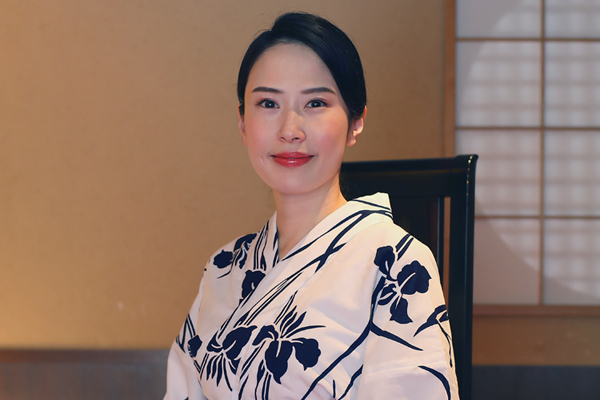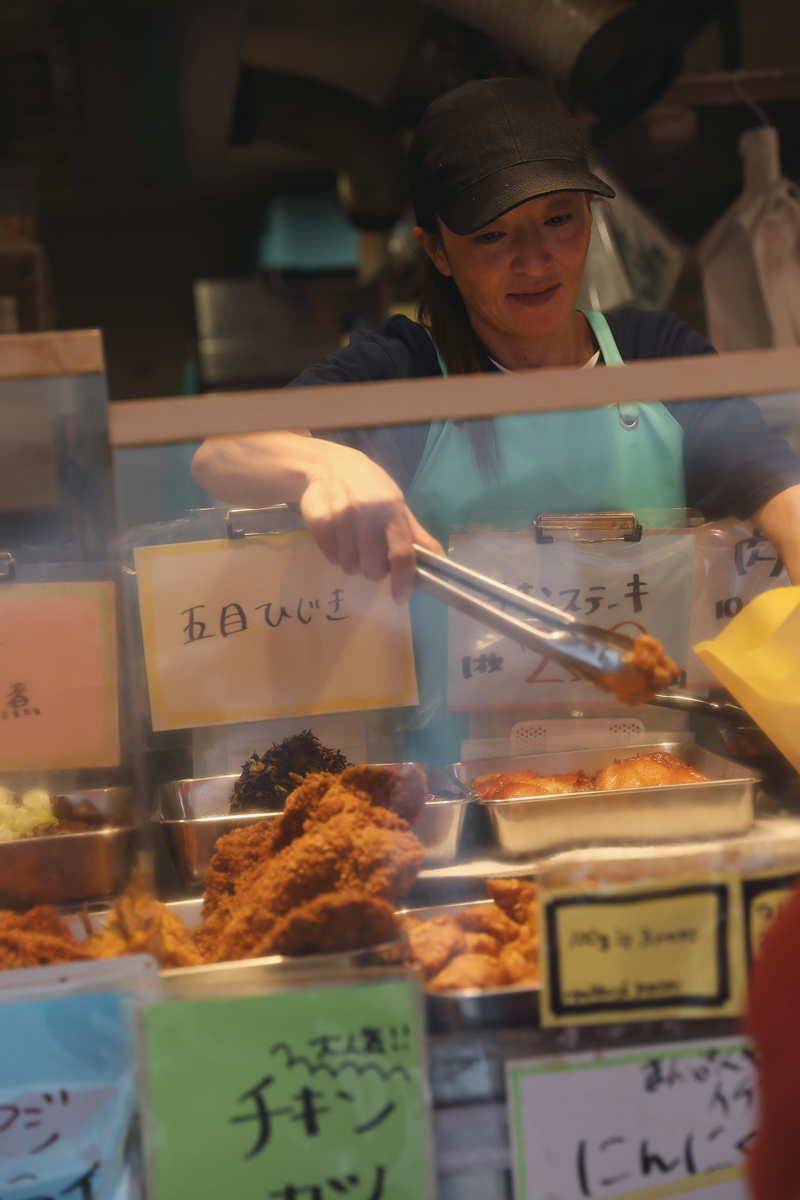
再開発と街の記憶
再開発と街の記憶
再開発で生まれるものとなくなるもの、という話。

東京を歩けば多くのクレーンを見かける。 ときには同じ場所に何本もたっている。 そんな場所ではたらいがい、再開発事業が行われている。 そこに新しい街ができ、未来が訪れる。 しかしふと、再開発と聞くと後ろ向きな気持ちになる。 その開発は本当に正しいのか。 東京の3カ所の再開発現場を紹介する今号のyoff。 この号を読んで都市や街づくりについて考えてもらえるとうれしいです。
再開発と街の記憶
Feature | 2024.12.13
再開発で生まれるものとなくなるもの、という話。
東京を歩けば多くのクレーンを見かける。
ときには同じ場所に何本もたっている。
そんな場所ではたいがい、再開発事業が行われている。
そこに新しい街ができ、未来が訪れる。
しかしいま、再開発と聞くと後ろ向きな気持ちになる。
その開発は本当に正しいのか。
東京の3カ所の再開発現場を紹介する今号のyoff。
この号を読んで都市や街づくりについて考えてもらえるとうれしいです。
Let’s explore what redevelopment creates
and what it takes away.
Walk around Tokyo, and you’ll see many cranes—
sometimes several in one area.
Such areas are usually redevelopment project sites that will
spawn new districts with the promise of a better future.
But lately, the term “redevelopment” stirs unease—is it
truly the right path? This issue of yoff examines three
Tokyo sites, inviting reflection on urban planning.

東京をはじめ、日本の各都市で再開発が進んでいる。
建物やインフラの強化、防災機能の充実などといった理由があり、多くの事業者は異口同音に「にぎわいの創出」や「潤いある街づくり」をうたい、駅前には高層ビルが建ち、住民が増え、活気ある街へと変貌するという。それって本当?と思いながら、再開発の現場を歩いてみた。
Redevelopment is advancing rapidly across Tokyo and elsewhere in Japan,
with promises of stronger infrastructure,
disaster resilience, and vibrant communities.
Skyscrapers rise around stations, attracting residents and activity—
but do such redevelopments truly deliver? With this question, I visited several sites.
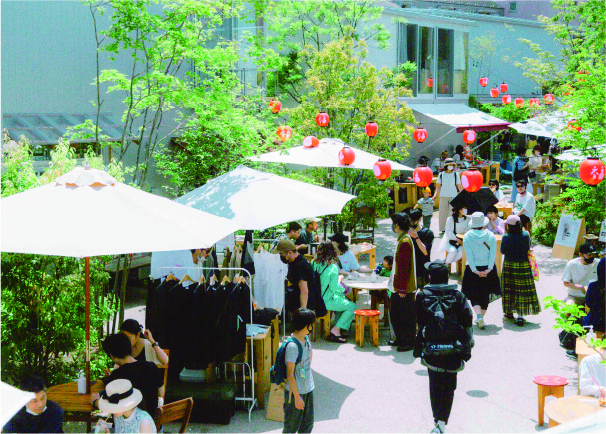
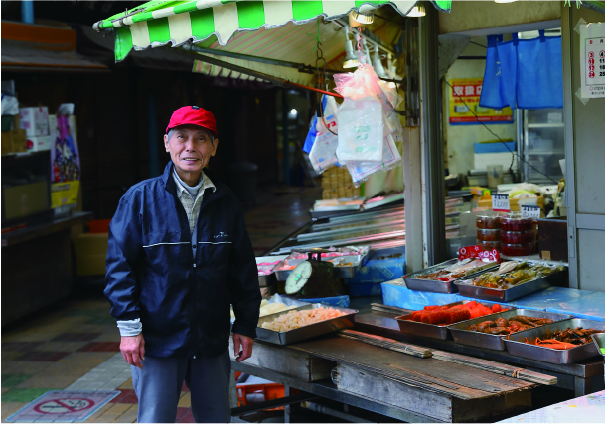
いま東京は未曾有の再開発ラッシュだという。すぐに思いつくところでは虎ノ門、麻布台、八重洲、渋谷といったところ。なかでも渋谷は100年に1度といわれる大規模再開発。駅はビルに囲まれ、ハチ公が息苦しがっているような気がする。変貌は激しく、渋谷を熟知した人でも道に迷うという。自分は長年、渋谷で働いてきたこともあり、この街が大好きだった。だけどいまは苦手。人が多いし、道がわからないし。
なにもない場所に街をつくる開発と、そもそも街があり生活があった所に手を入れる再開発は大きな違いがある。たくさんの人が訪れ、食べて、飲んで、笑って、ときには泣いて、人生のいくらかを過ごした街が変わる、それが再開発。好きな人の手を握った場所、子どもと一緒に歩いた場所、友人と大酒を飲んでバカをやった場所、通勤や通学で毎日通った場所。街にはそれぞれの人の、いろいろな想い出や記憶に残る風景がある。それが再開発でなくなることもある。大切にしまっていた昔の写真が消えてしまうような。
開発は希望、再開発は喪失。そう思うのは自分だけだろうか。でもなかには幸せな再開発があるのも事実で、下北沢がそのいい例。
いくつかの再開発の現場を巡ってみようと思った。都心のオアシスである神宮外苑、センベロの聖地といわれている立石、そしてすでに新しくなった下北沢。それぞれに再開発にいたる理由があり、目指すべき姿もあるようで、それはホームページなどに書かれている。だけど、こと街にいたっては行ってみないと実感できないものが多くある。そんなことで、3つの再開発の現場を訪ねた。
Tokyo is amid an unprecedented redevelopment boom, with major projects in Toranomon, Azabudai, Yaesu, and Shibuya. Shibuya, in particular, is undergoing a “once in a century” transformation. The station is now encircled by skyscrapers, almost suffocating Hachiko and leaving even locals disoriented. Having worked in Shibuya for years and loved the city, I now find it overwhelming—crowded and unrecognizable.
Developing a new district is vastly different from redeveloping an area with a rich history and community. Redevelopment transforms places where people once lived, worked, laughed, cried, and made memories. The spot where you held hands with someone special, the streets you walked with your child, the corner where you laughed and drank with friends, the paths you took daily—these cherished places often disappear with redevelopment. This feels like losing a cherished photograph from the past.
Development inspires hope, but redevelopment often feels like loss. Am I alone in thinking this? Yet, examples of “happy redevelopment” exist, and Shimokitazawa is a prime example.
With this in mind, I visited three redevelopment sites: the urban oasis of Jingu Gaien, Tateishi’s beloved drinking district, and the newly transformed Shimokitazawa. While their redevelopment goals are detailed online, districts must be experienced firsthand to be truly understood.

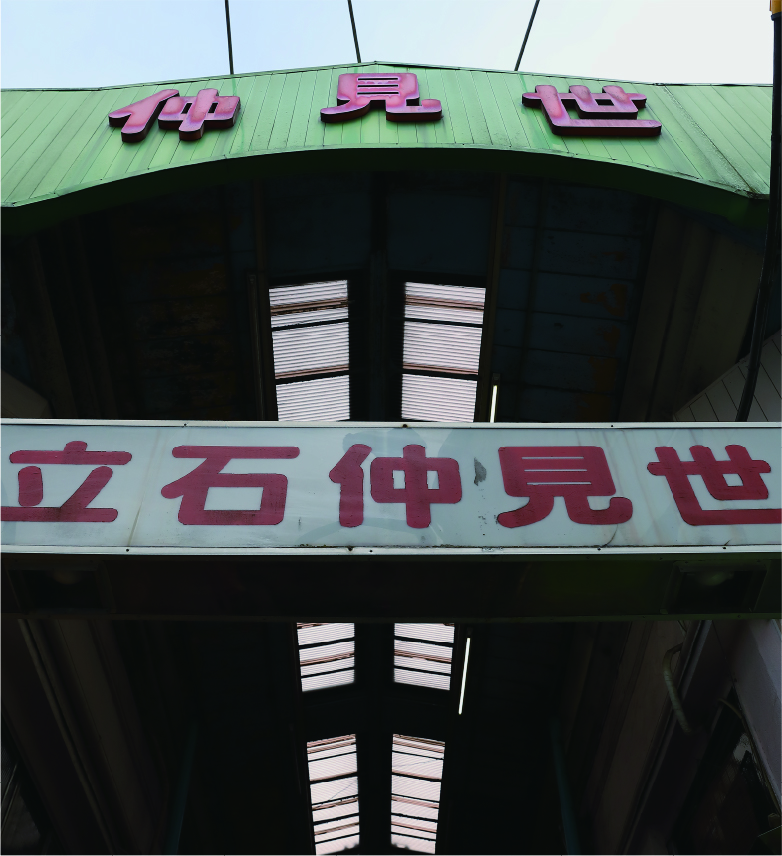
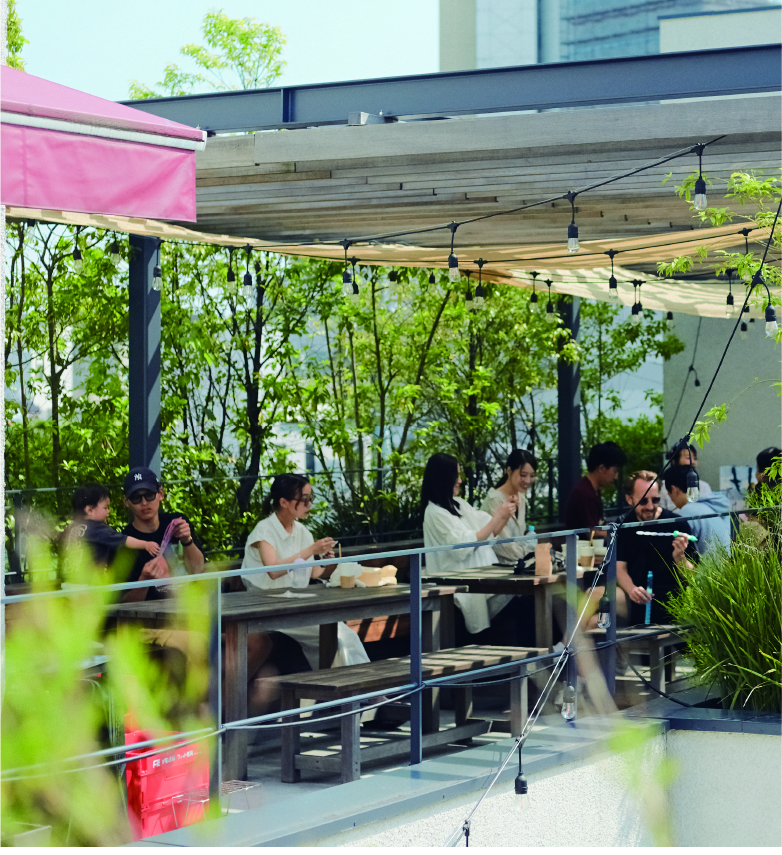
「神宮外苑を未来につないでいく」、都心のオアシスを新しくする再開発。
Feature | 2024.12.13

都心の真ん中にある神宮外苑。
再開発により樹木が増え、スポーツ施設も充実。
しかし、多くの著名人が反対している。
東京には緑が多い。その昔はコンクリートジャングルといわれていたこともあったが、実際はそうでもない。明治神宮、新宿御苑、代々木公園、日比谷公園、そして皇居といった緑量が豊かな場所が点在している。
そんななか神宮外苑には、どちらかといえば都会的で洗練された雰囲気がある。青山通りやキラー通りからアクセスできるという位置や美しい並木道、そこにあるカフェが印象的だからかもしれない。
人々は、表参道でショッピングをして、246沿いをぶらぶら歩き、あるいはキラー通りあたりのブティックをのぞきながら散策を楽しむ。だんだん店がまばらになり、人混みが落ち着いたあたりから歩もゆるみ、外苑前の銀杏並木へと辿り着く。
美しく並んだ銀杏の木、空は広く、緑や土の匂いに癒される。恋人たちは手をつなぎ、家族連れの子どもは親の手を離し駆けだす。開放感がそうさせる。心地いい木漏れ日の下で、ベンチに腰をおろす人、カフェのオープンスペースでお喋りを楽しむ人。どこからか聞こえる笑い声や子どもたちの歓声、近くを走る車の音さえハッピーノイズになる。
ジョギングをした人がいる、野球やラグビーの観戦をして帰りにホープ軒のラーメンを食べた人がいる。ここ、神宮外苑の風景には、たくさんの想い出がつまっている。そしていま、その風景が変わろうとしている。
ニュースでも取り上げられているように、神宮外苑では再開発事業が進んでいる。事業者のホームページには「神宮前を未来につないでいく」というキャッチコピーのもと、1,904本の樹木が2,304本となり、緑が増えて広域避難場所としても機能するという。また神宮球場はバリアフリーとなりラグビー場は全天候型に。事業者いわく「世界に誇れるスポーツクラスターを形成、ウェルビーイングなまちづくり」が行われるらしい。ああ、耳に心地いい言葉の羅列。そして新しくつくられる神宮球場を囲むように高層のオフィスビルやホテル、商業施設などが入るビルが建ち、さらなる賑わいが創出されるようだ。
こうしてホームページを見るかぎりではいいことずくめのこの再開発に、反対の動きがある。そこには坂本龍一や村上春樹といった、世界に通用する深い洞察力や豊かなイマジネーション、幅広い知識をもった人たちがいる。そういった人たちはこの再開発の今、そして未来に何を見ているのか。
都市における再開発について、きちんと考え、動きはじめないと手遅れになってしまう。
“Connecting Jingu Gaien to the Future”
Redeveloping an Urban Oasis.
In central Tokyo, Jingu Gaien’s redevelopment aims to add greenery and upgrade sports facilities, but it faces celebrity opposition.
Despite Tokyo’s reputation as a concrete jungle, the city boasts significant green spaces, such as Meiji Shrine, Shinjuku Gyoen, Yoyogi Park, Hibiya Park, and the Imperial Palace.
Among them, Jingu Gaien has a distinctly urban sophistication, likely due to its iconic tree-lined avenues, stylish cafes, and convenient access from Aoyama-dori and Killer-dori.
Visitors often shop along Omotesando, stroll down Route 246, or browse boutiques on Killer-dori before reaching the serene ginkgo-lined paths of Gaienmae.
The wide skies, the scent of greenery and earth, and the calming ambiance create a haven where couples hold hands, children run freely, and visitors relax on benches or chat in open-air cafes. Even the distant hum of traffic feels like a “happy noise” in this urban sanctuary.
Jingu Gaien holds countless memories: first dates, morning jogs, baseball or rugby games followed by ramen at Hopeken. It’s a place steeped in personal and collective history. But now, this cherished landscape is poised for transformation.
As widely reported, redevelopment is underway at Jingu Gaien. According to the developers, the project aims to “connect Jingu Gaien to the future.” Plans include increasing the number of trees from 1,904 to 2,304, expanding green spaces for use as evacuation zones, making Jingu Stadium barrier-free, and upgrading the rugby field to an all-weather facility. The pleasant-sounding goal is to create a world-class “sports cluster” and a “well-being-oriented community.” In addition, high-rise office buildings, hotels, and commercial spaces will surround the new stadium, promising even greater vibrancy.
At first glance, the redevelopment appears promising as described on the project’s website. However, strong opposition has emerged, including from globally renowned figures like Ryuichi Sakamoto and Haruki Murakami, whose insights, creativity, and knowledge resonate worldwide. What do these individuals see in this redevelopment—both now and in the future?
If we don’t take a closer look at urban redevelopment and act thoughtfully, it may soon be too late.

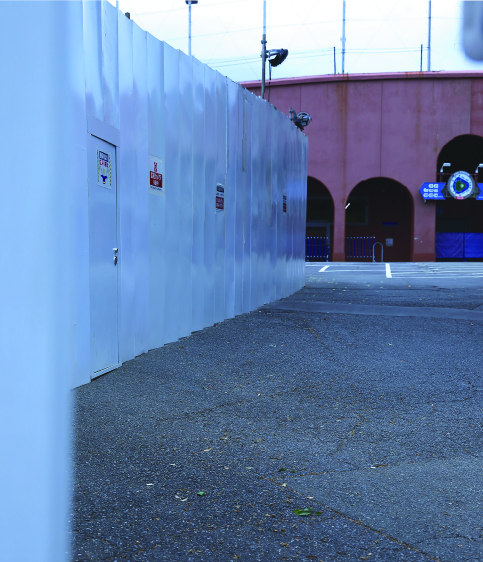

センベロで有名な下町に、新しい風景をつくる立石の再開発。
Feature | 2024.12.13

美味しいもつ焼きや煮込みの店がある立石。
お酒好きの人に愛されてきた下町。
ここにいま、高層ビルが建とうとしている。
センベロという言葉がある。千円でベロベロに酔える店のことをいう。そんなセンベロの聖地といわれているのが立石。葛飾区に位置し、京成線の立石駅がある街。
立石では駅前の再開発が進んでいて、駅の北側はさら地になっている。一方の南側も間もなく再開発の手が入るという。ここもさら地になる日が近い。
立石には安く美味しく飲み食いできる名店がいくつもあった。例えば、北側には「江戸っ子」、南側には「宇ち多”」。「宇ち多”」はいまも営業をしていて、いつも長い行列ができている。その他にも鶏のうまい店、絶品の水餃子の店、そして呑んべ横丁には小さなスナックやバーが軒を連ねていた。
カウンター中心のもつ焼き屋にぎっしり入った客。ぎゅっと詰められ、串焼きの煙に巻かれてモツ、ガツ、シロと食が進み、ハツモトのこりこり感を楽しみながらアルコール多めの酎ハイを呑むうちに、隣の見知らぬ人と話しが盛り上がる。意気投合して、2軒目は呑んべ横丁のスナックへ。
呑んべ横丁のスナックはどこも、これがまた狭い。中にはママがひとり。ママといっても自分の母親くらいの年格好、つまり世間でいうおばあちゃんくらい。「あら、いらっしゃい」「まったく久しぶりね」「どうなの仕事のほうは」としわがれた声で言ってくる。よく “帰ってきたと思わせる店” があると聞く。その “帰ってきた” という感覚が実感できる。ママの存在、店内の雰囲気、そして立石という街が、そんな感覚を呼ぶ。
呑んべ横丁があったのが駅の北側。そこはすでに重機が入り工事が進んでいる。葛飾区のホームページには、ここには36階と13階の2棟のビルが建ち、庁舎や住宅、店舗、オフィスなどが入ると書かれている。よくいう複合開発だ。そうして街のにぎわいを創出し、防災性の強化を図り、安全・安心な街づくりを目指すという。神宮外苑のホームページ同様、こちらも耳障りがいい。
駅の南口は、いまはまだ手が付けられていない。しかしここも近いうちに工事に入る予定だ。そして生まれるのは32階のビルと3階の建物。そこには北口と同じように住宅、店舗、オフィスなどが入る。つまり立石は将来、駅の両側に2つのタワーマンションと1つのビルがある、都心のそこらへんにある風景となんら変わらないものになる。
街の魅力ってなんだろうかと、この頃はよく考える。新しくなり、どこにでもあるチェーン店があり、タワーマンションに人が住めば、それは魅力的な街なんだろうか。それよりも、年月とともに想い出や愛着が積み重なっているほうが魅力なのでは。汁を継ぎ足すことで煮込みの旨味が深まるように。そういえば立石には煮込みの名店も多くあった。
この再開発を契機に、新しい立石らしさが生まれることを期待している。
Redeveloping Tateishi:
Transforming a Downtown Area Famous for Its Drinking Dens.
Tateishi, known for its delicious grilled skewer and stew eateries, has long been a beloved downtown area for drink enthusiasts. But now, high-rise buildings are set to redefine its skyline.
Tateishi is often hailed as the mecca of senbero, which refers to places where you can drink yourself happy for just 1,000 yen. Located in Katsushika Ward, with Keisei Tateishi Station at its heart, the area is undergoing extensive redevelopment.The land north of the station has already been cleared, and soon the south side will follow suit.
Tateishi was once home to numerous affordable and delicious eateries, such as Edokko to the north and Uchida to the south—Uchida still operates today, with its ever-present long lines. Beyond these iconic spots, the area boasted excellent yakitori, standout gyoza shops, and the nostalgic Nonbe Yokocho, a narrow alley lined with tiny bars and snack joints.
Packed counters in yakitori shops buzzed with life, as patrons enjoyed skewers of motsu, gatsu, and shiro, washed down with strong chu-hi. Strangers became friends, often heading to a second bar in Nonbe Yokocho, where snack bars offered cramped but cozy spaces.
Inside, a lone mama-san, often the age of one’s grandmother, would greet you with a raspy, “Oh, welcome! It’s been so long. How’s work?” These places felt like coming home—a sentiment deeply tied to Tateishi itself.
But the north side of the station, once home to Nonbe Yokocho, is now a construction site. According to Katsushika Ward’s website, the redevelopment plan includes two buildings, 36 and 13 stories tall, housing municipal offices, residences, shops, and offices—a typical mixed-use development. As with other projects, it promises to revitalize the area, enhance disaster preparedness, and create a safer, more vibrant city. Likewise, Jingu Gaien’s website also makes pleasant promises. The south side remains untouched for now, but construction is scheduled soon, with a 32-story tower and a 3-story complex planned. Like the north, they’ll include residential, commercial, and office spaces. The result? Tateishi will eventually resemble many other urban areas, with towering mansions and chain stores.
It makes you wonder: what makes a city’s charm? Is it sleek new buildings, chain stores, and dense residential towers? Or is it the memories and affection built over time, much like the depth of flavor in a stew enriched by multiple additions of broth?
Tateishi’s many famed stewed dish restaurants come to mind as I reflect on the changes.
I can only hope that this redevelopment brings about a new sense of Tateishi-ness, preserving some of the soul that made this place special.



もっとこの街が好きになりそう。成功した再開発のひとつ、下北沢。
Feature | 2024.12.13

チェーン店ではなく個性あふれる店や施設が並ぶ「下北線路街」。
再開発を成功させたのは下北らしい“対話”。
下北沢が生まれ変わってしばらくが経つ。足を運んでみると、相変わらず若者が多く、活気にあふれている。
いま東京のあちらこちらで行われている再開発はどこを切っても同じ金太郎飴のようなもの。駅前に高層ビルが建ち、住居があり、オフィスがあり、その足元にはチェーン店が入っている。しかし、下北沢の再開発はちょっと違う。
再開発にいたるきっかけは小田急線の「開かずの踏切」だったという。最大で1時間のうち40分以上も遮断機が下りていたというから渋滞もすごかっただろう。これはなんとかしなければということで2004年、小田急線を地下化する工事を開始した。そうして2022年5月に全面開業されたのが「下北線路街」。小田急線の東北沢〜下北沢〜世田谷代田の線路跡地に新しい街が生まれた。しかし、そこにいたるまで紆余曲折があったという。
下北沢はサブカルの街。演劇、音楽、美術などのアーティストが多くいて、東京のトレンディな街とは一線を画していた。個人経営の店が多く、それぞれに常連客がいて、夜ごとロック談義に花を咲かせるバンドマンや演劇論を交わす劇団員たちがいるような場所。そんな “シモキタらしさ” を住民たちは愛していたし、誇りに思っていた。この再開発の話が持ち上がった当初、住民たちは街が変貌することや高いビルが建つことを懸念して反対運動や行政訴訟を起こした。
それを解決に導いたのは徹底的な対話だったという。住民や区の担当者による意見交換会を世田谷区が主催、そこに小田急も加わり何回にもわたって話し合いが行われた。下北沢をいい街にしたい。そんな下北沢の良さとは “シモキタらしさ” にある。区も電鉄も住民も、みんながそういう想いだったのだろう。結果、再開発は成功した。
下北沢駅に着く。新しい駅舎には個性的な飲食店や雑貨店が入り、かつて線路があった場所には商業施設などが立ち、一帯で「下北線路街」と呼ばれる街となっている。ここにはカフェをはじめ、レコード店や本屋、ファッション雑貨店、さらには箱根から温泉を運んでくる温泉旅館や保育&コミュニティの場など、“シモキタらしさ” があるユニークなショップや施設が並んでいる。また、緑が心地いい散策路としても整備され、若者から家族連れまで楽しそうに歩いている。
自分は、この再開発の話がでてきた頃、下北沢に住んでいた。この街が大好きだったから、再開発で駅前に幹線道路が通り、高層ビルができ、ロータリーを囲むようにチェーンの居酒屋などが並んだらどうしようかと心配だった。その後、引っ越しをして久しぶりに訪れた下北沢を歩いて安心した。いい街になったと思った。
下北沢の再開発は成功したと思う。そして成功の秘訣は対話だったのでは。いま問題になっている再開発はどこも、この対話が足りていない。事業者と住民、地域の人たちが顔を合わせ、話し合いを重ねる。夜の下北沢でバンドマンや劇団員たちが激論をしていたように。対話も “下北らしさ” だったのかもしれない。
Falling in Love with the City Again:
Shimokitazawa’s Redevelopment Success
Shimokita Line Street thrives with unique shops and facilities,
not chain stores.
Its success lies in Shimokita-style “dialogue.”
It’s been some time since Shimokitazawa transformed, yet I find that the area remains lively and full of young energy.
Unlike many of Tokyo’s redevelopment projects, which often result in identical high-rise clusters filled with chain stores, Shimokitazawa’s story is different.
The redevelopment began with a practical issue: the Odakyu Line’s infamous “never-opening” level crossing, where gates could be down for up to 50 minutes per hour, causing heavy congestion. This led to the decision to underground the Odakyu Line, a project begun in 2004 and completed in May 2022, giving rise to Shimokita Line Street, a vibrant new district stretching from Higashi-Kitazawa to Shimokitazawa to Setagaya-Daita along the former railway tracks. However, there were twists and turns along the way.
Shimokitazawa has long been a hub for subculture—home to artists, musicians, and theater enthusiasts. Independent shops and intimate venues thrived here, creating a unique “Shimokita-ness” beloved by residents. When redevelopment was proposed, locals feared losing this charm to towering buildings and corporate chains. Their concerns led to protests and lawsuits against the plans.
The turning point came through dialogue. Setagaya Ward facilitated discussions between residents, the Odakyu Railway, and local officials, hosting numerous exchange meetings. All parties shared a common goal: to preserve and enhance Shimokitazawa’s character. The results speak for themselves.
Today, Shimokitazawa Station’s new building houses distinctive eateries and shops Stepping out, visitors find Shimokita Line Street, a stretch of unique businesses: cozy cafes, record stores, bookstores, fashion boutiques, and even an onsen bringing hot springs from Hakone. A sense of “Shimokita-ness” pervades every corner, from green walking paths to community hubs enjoyed by families and young people alike.
Having lived in Shimokitazawa during the redevelopment’s early days, I worried the area might lose its soul to generic roads and chain izakayas. Returning after years away, I was relieved to find a city that had grown better while staying true to itself. Shimokitazawa’s redevelopment is, without a doubt, a success—a model of how dialogue can shape urban transformation.
The ongoing redevelopment issues in other parts of Tokyo could learn from Shimokitazawa. Genuine dialogue—bringing together residents, developers, and the community—is crucial. Perhaps even that willingness to engage in passionate debate, much like the band members and actors of Shimokitazawa’s spirited nights, is part of what makes this place so special. In the end, dialogue itself may be the essence of “Shimokita-ness.”






